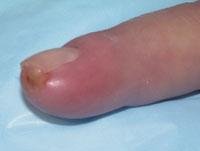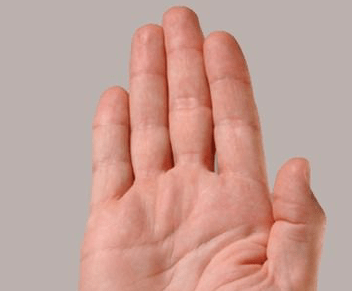Felon (Infection of the pulp of finger)
content of this page
1- Introduction
2- Anatomical Overview
3- Pathophysiology of a Felon
3- Treatment
Introduction
Pulp-Space Infection (Felon): The pulp space of the fingers is a closed fascial compartment
situated in front of the terminal phalanx of each finger Infection of such a space is common and serious, occurring most often in the thumb and index finger. Bacteria are usually introduced into the space by pinpricks or sewing needles. Because each space is subdivided into numerous smaller compartments
by fibrous septa, it is easily understood that the accumulation of inflammatory exudate within these compartments causes the pressure in the pulp space to quickly rise.

Anatomical Overview
Anatomy of the Finger
- Skin: The outermost layer providing protection.
- Subcutaneous Tissue: Contains fat and connective tissue, providing cushioning and insulation.
- Fibrous Septa: Vertical fibrous bands that divide the pulp into numerous small compartments, giving the fingertip its firm consistency.
- Pulp Space: The soft tissue area at the fingertip, which includes the subcutaneous tissue and fibrous septa.
- Bones:
- Distal Phalanx: The bone at the tip of the finger.
- Nerves: Provide sensation to the fingertip.
- Blood Vessels: Supply blood to the fingertip tissues.

Pathophysiology of a Felon
- Infection Source: Commonly due to Staphylococcus aureus bacteria, often following a puncture wound, cut, or other trauma to the fingertip.
- Spread of Infection: Bacteria invade the pulp space, causing an abscess to form within the tightly packed compartments created by the fibrous septa.
- Pressure Increase: The confined space and dense fibrous septa limit the spread of the infection, leading to increased pressure and severe pain.
- Potential Complications:
- Osteomyelitis: Infection spreading to the bone (distal phalanx).
- Flexor Tenosynovitis: Infection spreading to the flexor tendon sheath.
- Septic Arthritis: Infection spreading to the adjacent joints.
Treatment
Non-Surgical Management:
- Early Stage: Warm soaks, elevation, and antibiotics (if the infection is caught early before abscess formation).
Surgical Management:
- Incision and Drainage: The primary treatment for established felons.
- Procedure: A longitudinal incision is made over the area of maximum tenderness to drain the pus and relieve pressure.
- Irrigation: The abscess cavity is thoroughly irrigated.
- Debridement: Removal of any necrotic tissue.
- Post-Operative Care:
- Wound Care: Regular dressing changes and wound monitoring.
- Antibiotics: Continued antibiotic therapy to eradicate any remaining infection.
- Pain Management: Pain relief medications as needed.
- Incision and Drainage: The primary treatment for established felons.